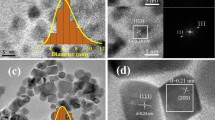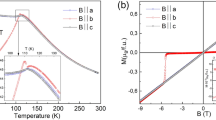Abstract
FORMERLY the preparation of single crystals of iron has been made by Goldschmidt's method, by which means crystals ranging from one to two centimetres in linear dimensions can be obtained; but the production of larger crystals by the same method is almost impossible. In 1924, however, Prof. C. A. Edwards obtained large crystals of iron by using Prof. Carpenter's method of preparing single crystals of aluminium, and thus opened to us an important route for the investigation of the true nature of the metal. Hitherto we have been able to measure only the mean of the properties differing in various orientations of the crystal, but we are now in a position to study the property of an individual crystal in different directions relative to its orientation.
This is a preview of subscription content, access via your institution
Access options
Subscribe to this journal
Receive 51 print issues and online access
$199.00 per year
only $3.90 per issue
Buy this article
- Purchase on Springer Link
- Instant access to full article PDF
Prices may be subject to local taxes which are calculated during checkout
Similar content being viewed by others
Author information
Authors and Affiliations
Rights and permissions
About this article
Cite this article
HONDA, K., KAYA, S. & MASUYAMA, Y. On the Magnetic Properties of Single Crystals of Iron. Nature 117, 753–754 (1926). https://doi.org/10.1038/117753a0
Issue Date:
DOI: https://doi.org/10.1038/117753a0
Comments
By submitting a comment you agree to abide by our Terms and Community Guidelines. If you find something abusive or that does not comply with our terms or guidelines please flag it as inappropriate.



